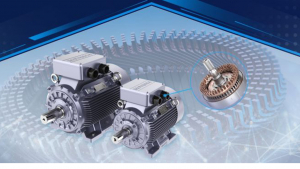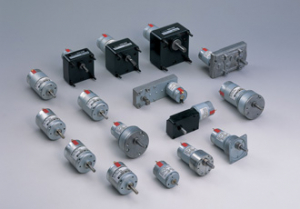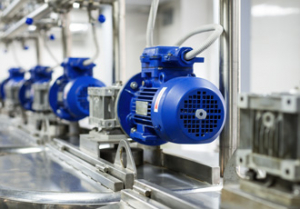Fundamentals of servo motors in process control

Long takes, when done properly, are masterstrokes of cinema. However, just a single mistake can mean scrapping reams of footage. To ensure filming equipment can keep up with the director’s cinematic vision, cameras must perform precise and perfectly repeatable actions. Here, Dave Walsha, Commercial Development Officer at EMS, explains how servo motors help achieve process precision both on and off camera.
Servo motors are key components in gimbals, which help stabilise cameras and ensure smooth shots. Viewers of news programs will be accustomed to spotting the automated camera systems that operate in front of the newsreader’s desk, which seamlessly switch angle, pan and focus.
Precise control isn’t only a priority on a film set. On the shop floor of a manufacturing facility, automated production of all varieties also requires consistent, repeatable motion in many of its processes.
Defining movement
While there are many varieties of servo motors, their main feature is the ability to precisely control the position of their shaft. This is due to servo motors being used in closed-loop systems, meaning that, when equipped with an encoder, they can use position feedback to control motion and final position.
Encoders work, in simple terms, by reading the information from a positional sensor, normally mounted on the rear shaft of the motor. Using this information, the drive system can track the position of the motor and how far and fast it is travelling. Encoders can have varying levels of precision, from tracking the position every time the motor turns once up to thousands of discrete positions per revolution.
Precision is essential when assembling electrotonic components, and one slight misstep could reduce the performance of a part. Servo motors are present in many different steps of automated electronics production, including dosing of thermal paste and positioning systems in robotics arms.
Precise control
Another advantage of using servo motors for position control functions is that they can be customised to each application using a variety of ancillary products. Speed controllers and motion controllers allow the end-user to specifically modify speed and motion, while gearheads can adjust the torque to the application’s requirements.
In the film industry, this means that camera operators can program their equipment to follow the same path over multiple shots, no matter how much the operator moves. This level of exacting precision is also sought after in workshops and along repeatable productions lines.
Automated production lines can manufacture parts faster than manual lines, and their speed is only limited by the control mechanisms on the production line. By installing quality servo motors, directors and original equipment manufacturers can benefit from high levels of precision.
For example, the FAULHABER BXT low profile brushless motors are class-leading in their power density, but can also be equipped with high-performance GPT planetary gearheads to further increase torque output. Precision encoders can then be used to accurately monitor the position of the motor in step movement applications.
Bespoke precision
Specific sizes and shapes for servo motors and their relevant gearboxes can also be critical to certain applications, meaning that off the shelf applications are not always suitable.
For this reason, EMS offers bespoke production services to customise motors, gears and their envelopes to ensure that the component can fit the application. To guarantee continued quality we have design, production and testing all under one roof and only source parts from trusted suppliers.
This allows clients to specify and obtain precise geometries for their drive system envelopes without sacrificing performance, ensuring that their application has the smooth actuation it necessitates to fulfil application requirements.
Long takes are a marvel to observe and take precision, practice and controlled movement to perfect. However, while spectacular, they are not unique to the film industry with more and more parts of manufacturing also requiring these specialisms to produce quality products. Positional control is becoming more critical than ever before, meaning it pays to have quality servo motors in applications.
Similar articles
More from Electro Mechanical Systems Limited
- Beyond Industry 4.0: bringing products to market faster 16th June 2021
- Motors available for accelerated prototyping 4th June 2021
- Miniature size, mighty control 6th May 2021
- Supplier brings wide range of linear actuators to the UK 14th April 2021












Write a comment
No comments